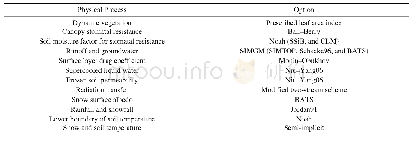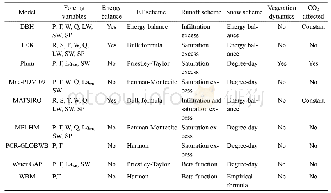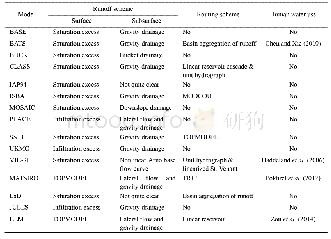《Table 2 Comparison of parameterization schemes of some global hydrological models (Haddeland et al.
R:rainfall rate,S:snowfall rate,P:precipitation rate(rain and snow calculated in the model),T:air temperature,W:wind speed,Q:air specific humidity,LW:down welling long wave radiation;Lawn:net long wave radiation;SW:down welling shortwave radiation,
To estimate global and regional water resources more accurately,large-scale hydrological models based on watershed hydrological model frameworks have been developed in the past decade(Bierkens,2015;Sood and Smakhtin,2015)and have become one of the most important branches of climate change research(Yong et al.,2006).Based on distributed hydrological models,researchers have extended hydrological simulation from the watershed scale to the continental scale or global scale by improving the grid scale(Liu et al.,2003;Notter et al.,2007).Large-scale hydrological models are mostly based on conceptual or semi-distributed models and are primarily used to simulate runoff processes in large watersheds and to assess the impacts of climate change on hydrological situations.Table 2 lists some commonly used large-scale hydrological models,including MACRO-PDM(Arnell,1999)and PCR-GLOBWB(Bergstrom and Graham,1998;van Beek et al.,2011).These models simulate runoff based on the outputs of climate models,which allows the effects of climate change on water resources to be assessed in large-scale basins.However,these models are usually applied to the simulation of rainfall-runoff and the calculation of water budgets;they do not consider energy balance and cannot fully describe the water and energy exchange processes of land-atmosphere interfaces(Su and Hao,2001).
| 图表编号 | XD0047168500 严禁用于非法目的 |
|---|---|
| 绘制时间 | 2019.03.01 |
| 作者 | 宁理科、占车生、罗勇、王月玲、刘梁美子 |
| 绘制单位 | Ministry of Education Key Laboratory for Earth System Modeling, Department of Earth System Science,Tsinghua University、Joint Center for Global Change Studies、Key Laboratory of Water Cycle and Related Land Surface Processes, Institute of Geographic Science |
| 更多格式 | 高清、无水印(增值服务) |
查看“Table 2 Comparison of parameterization schemes of some global hydrological models (Haddeland et al., 2011)”的人还看了
-

- Table 1.Parameterization scheme options used in this study.The tested parameterization schemes in Fig.10 are shown in br
 提示:宽带有限、当前游客访问压缩模式
提示:宽带有限、当前游客访问压缩模式





